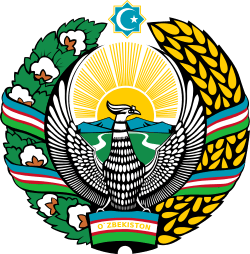Museum of Victims of Political Repression in Tashkent
| "Qatag'on Qurbonlari Xotira Muzeyi" | |
| Established | 2002.08.31 |
|---|---|
| Location | Tashkent, Uzbekistan |
| Type | Public |
| Founder | Islam Karimov |
Museum of Victims of Political Repression in Tashkent, is the museum which tells about the history of Uzbekistan during the Soviet Union times, which is focused on showing hard times of people who were killed by the government at those times. The expositions at the "Museum of Victims of Political Repression in Tashkent" are divided into 10 parts.
All about the museum
The "Museum of Victims of Political Repression in Tashkent" is dedicated to the memory of the people who fought for the independence of Uzbekistan and who were killed by the government. "Museum of Victims of Political Repression in Tashkent" is considered to be as one of the youngest museums in Tashkent and in whole Uzbekistan as it was established in the year of 2002 on 31 August by the edict of President of Republic Uzbekistan Islam Karimov. The "Museum of Victims of Political Repression in Tashkent" was first located in very small park area in front of the Tashkent TV tower, however, nowadays the area which is covered by the museum expanded rapidly, and the museum has become the part of big memorial complex. The museum can be expressed as the sad pages of Uzbekistan's history from the mid-19th century to the second half of the 20th century. The expositions at the "Museum of Victims of Political Repression in Tashkent" are given as the photographs, documents and personal belongings of the killed people. The repression started in 1860 when the Russian Empire waged a colonial war in Central Asia, the empire did not only destroy and conqueror the cities, but also they killed huge number of people. Instead of this, the expositions tell to the visitors about the Soviet Union times, after the October Revolution. About the Stalin's regime which was one of the bloodiest periods in the history of modern Uzbekistan. And the last, about the more than 800 criminal cases under a general name "Cotton case" which happened in Uzbekistan in the late 80s of the 20th century. There are some stands and monuments at the "Museum of Victims of Political Repression in Tashkent" which shows the maquettes of the concentration camps and prisons where the prisoners lived. The biggest stand at the "Museum of Victims of Political Repression in Tashkent" is the 'Prison van', on which people were taken to the prison by the commissars.
Main objectives
The "Museum of Victims of Political Repression in Tashkent" has set its own objectives in the way of improving the museum, and they are given as follows:
- Studying and learning tragic events of the colonial period
- Doing scientific research in public and private archives, in order to find the documents. Photographs and various artifacts related to the museum
- Studying lives and social activities of the victims
- Preparation and publication literary and scientific contributions of the victims
- Arranging the spiritual and educational activities amongst young generation of Uzbekistan
- Preparation of calendars, posters about the victims
Location
“Museum of Victims of Political Repression in Tashkent" is located in Tashkent, in the territory of "Shakhidlar Hotirasi". Which is translated from Uzbek language as the "In Memory of Victims of Repression"). It is located in front of the Tashkent TV tower. The place for the museum was chosen logically, which means that during the construction there were found number of graves, which means that the place which was choose, was the place where people were killed by the government.[1][2][3]
Links
Article about the museum in English checked 29 March 2016
Information about the museum in Uzbek checked 29 March 2016
Article about the museum afisha.uz checked 29 March 2016
See also
- State Museum of History of Uzbekistan
- The Museum of Health Care of Uzbekistan
- The Museum of Communication History in Uzbekistan
- Museum of Arts of Uzbekistan
- Tashkent Museum of Railway Techniques
- State Museum of Nature of Uzbekistan
- Tashkent Poly-technical Museum
- The Alisher Navoi State Museum of Literature
- Art Gallery of Uzbekistan
- Geology Museum in Tashkent
- Tashkent Planetarium
References
- ↑ Main information is obtained from the web-page checked 29 March 2016
- ↑ Information is obtained from the web page checked 29 March 2016
- ↑ Minor information about the museum is obtained from article in Uzbek checked 29 March 2016
